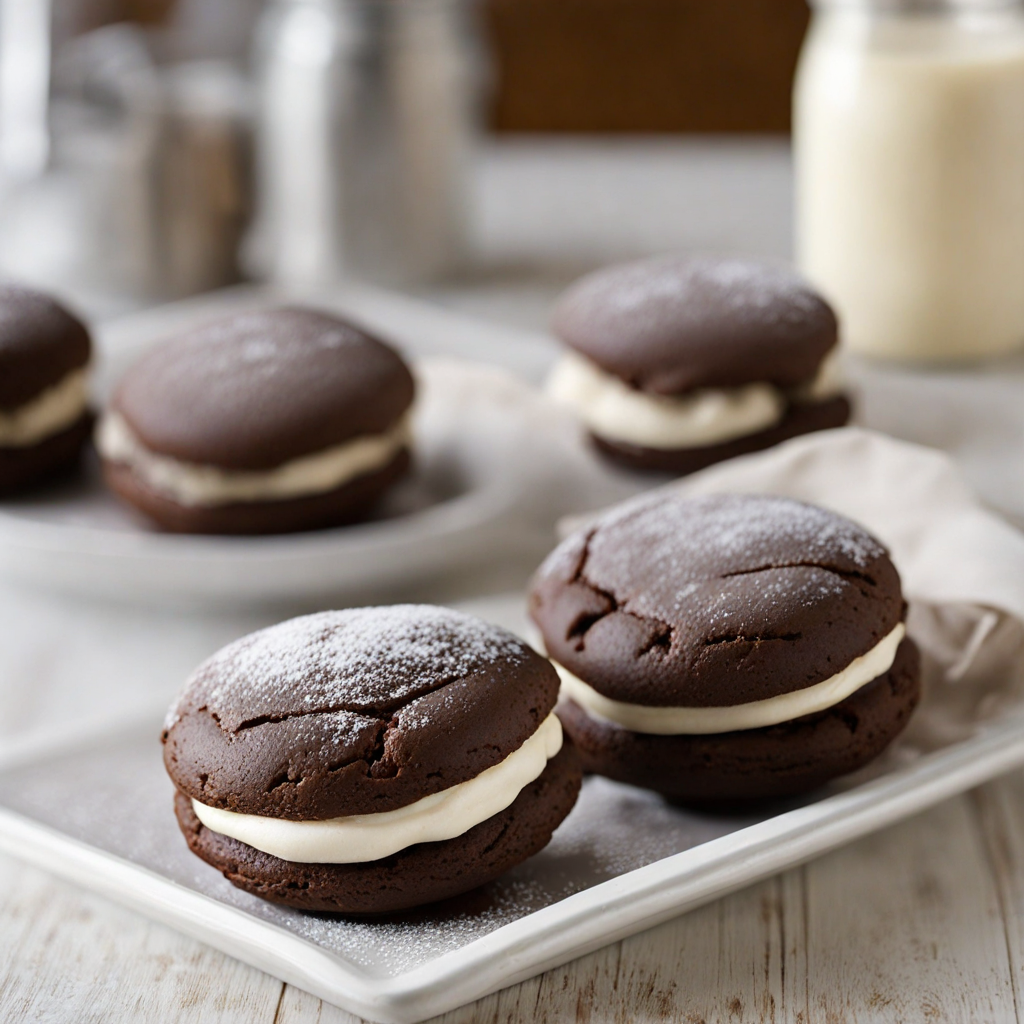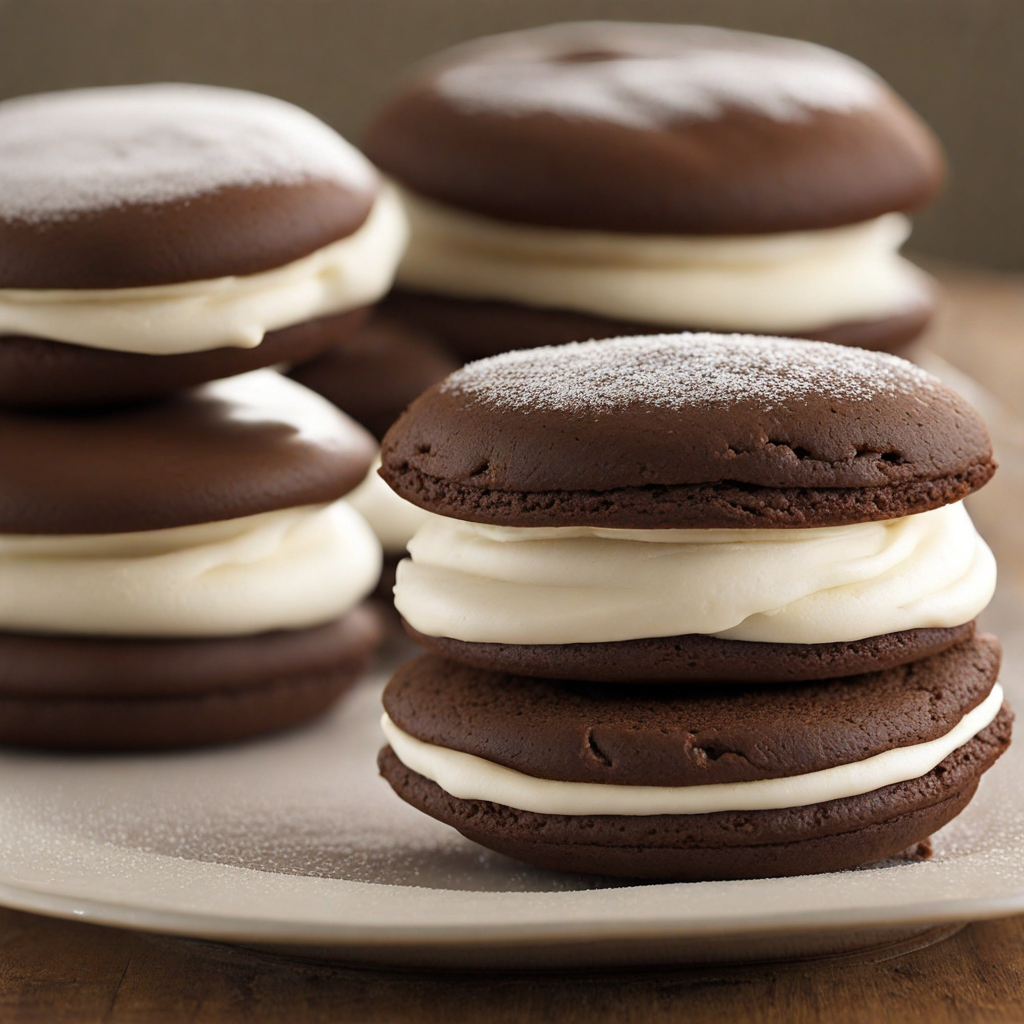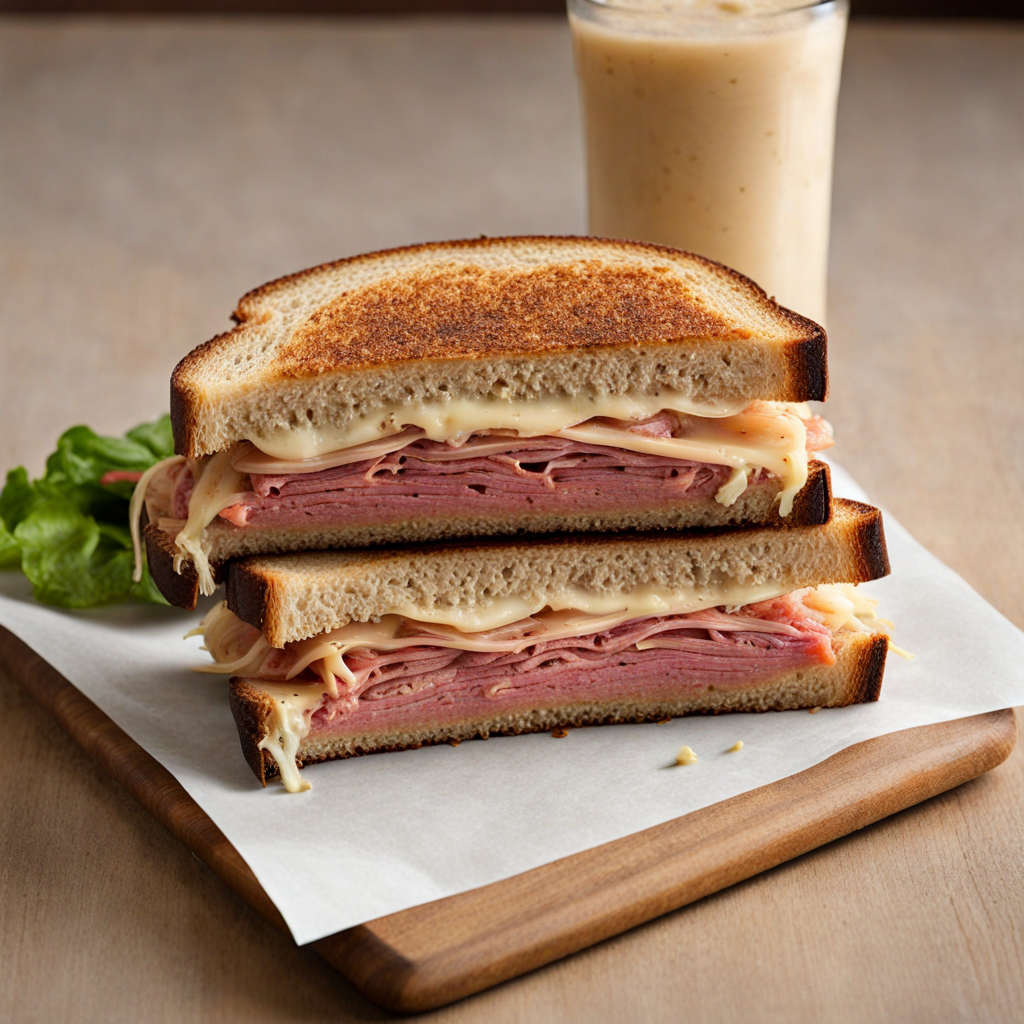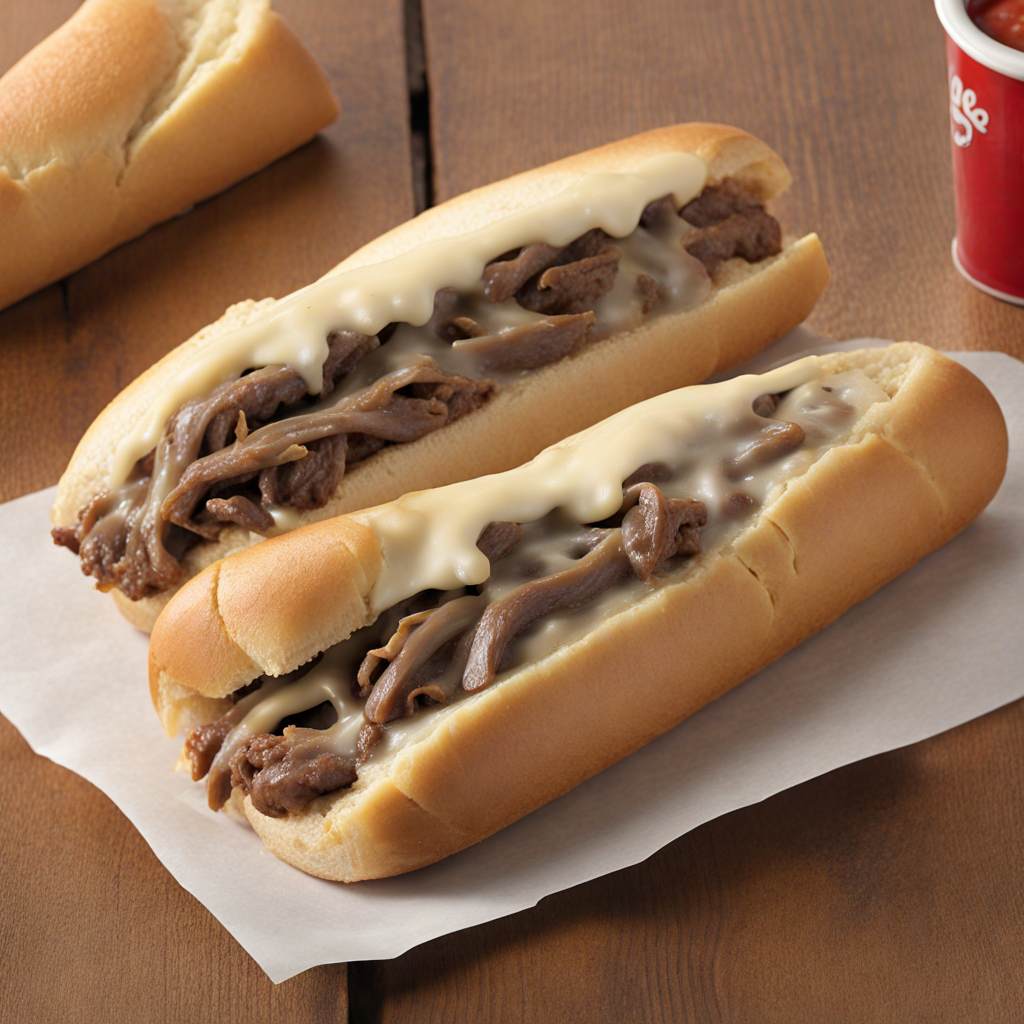Whoopie Pie
Whoopie Pies are a delightful treat that originated in the United States, often associated with New England and Pennsylvania Dutch communities. They consist of two soft, cake-like cookies, traditionally chocolate-flavored, that are sandwiched together with a creamy filling, typically made from marshmallow fluff or buttercream. The texture of the cookies is akin to a soft cake, creating a harmonious balance with the sweet and fluffy filling, making each bite a comforting experience. The charming combination of flavors and textures has made Whoopie Pies a beloved dessert across the country. These treats can be found in various flavors, expanding beyond the classic chocolate. Variations include red velvet, pumpkin spice, and even seasonal flavors that reflect the time of year. Each version maintains the signature soft cookie and creamy center, but the flavor profiles can vary dramatically, allowing for a unique tasting journey. Many bakeries and home bakers have embraced this dessert, often adding their own twist with artisanal ingredients or creative fillings, making Whoopie Pies a versatile and exciting option for dessert lovers. What truly sets Whoopie Pies apart is their nostalgic quality, often evoking memories of childhood baking and family gatherings. They are easy to share, making them a popular choice for parties and potlucks. The visual appeal of these round, plump treats, with their contrasting colors of cookie and filling, adds to their charm. Whether enjoyed as an afternoon snack with a cup of coffee or as a dessert after dinner, Whoopie Pies offer a delightful taste of Americana that is sure to enchant anyone looking for a new and satisfying sweet.
How It Became This Dish
The Whoopie Pie: A Sweet Journey Through American History #### Origins The Whoopie Pie, a delightful confection that has captured hearts and taste buds across the United States, boasts a storied history that blends tradition, regional pride, and a touch of mystery. While its exact origins remain somewhat murky, the Whoopie Pie is primarily attributed to the northeastern United States, particularly Maine and Pennsylvania. The earliest known references to Whoopie Pies date back to the early 20th century. Some food historians suggest that these treats may have roots in the Amish communities of Pennsylvania, where they were made as a way to use leftover cake batter. According to lore, these homemade pies were often packed in lunchboxes for farmers, who would exclaim "Whoopie!" upon discovering the sweet surprise. This spontaneous expression of joy is believed to have given the dessert its whimsical name. In Maine, the Whoopie Pie is celebrated as a regional specialty, with the state's residents claiming it as their own. Maine even declared the Whoopie Pie its official state treat in 2011, solidifying its cultural significance. #### Composition and Variations At its core, the Whoopie Pie consists of two soft, cake-like cookies—typically chocolate or vanilla—sandwiched around a creamy filling, often made from marshmallow fluff or buttercream. The soft, pillowy texture of the cookies, paired with the sweet, decadent filling, creates a harmonious balance that is both comforting and nostalgic. While chocolate and vanilla are the most common flavors, variations abound. Some bakers experiment with different cookie bases, such as pumpkin, red velvet, or even peanut butter, often paired with fillings that range from cream cheese frosting to flavored ganaches. This versatility has allowed the Whoopie Pie to transcend its humble beginnings, evolving into a canvas for culinary creativity. #### Cultural Significance The Whoopie Pie is more than just a dessert; it is a symbol of American culinary tradition and regional identity. In Maine, Whoopie Pies are commonplace at fairs, festivals, and local bakeries, often served as a nostalgic reminder of childhood. Maine's annual Whoopie Pie Festival, held in the town of Dover-Foxcroft, showcases the treat's popularity and the community's pride in their unique adaptation. In Pennsylvania, particularly among the Amish, Whoopie Pies are often made during family gatherings and celebrations, embodying the warmth of home cooking. The treat has become synonymous with comfort, evoking memories of shared moments and the simple pleasure of indulging in a homemade dessert. As a quintessential American dessert, the Whoopie Pie also reflects the country's melting pot of cultural influences. The recipe likely borrowed elements from various traditions, such as the New England "hiding cake" or the Pennsylvania Dutch "gob," suggesting a fusion of flavors and techniques. This blending of culinary practices mirrors the broader narrative of American identity, where diverse cultural heritages come together to create something uniquely American. #### Development Over Time As the 20th century progressed, the Whoopie Pie gained popularity beyond its regional roots. In the 1920s and 1930s, it began appearing in cookbooks and community recipe collections, further embedding it into American culinary culture. The post-World War II era saw a boom in convenience foods, and the Whoopie Pie was no exception. Pre-packaged versions began to emerge, making it accessible to a wider audience, though many purists argue that nothing compares to a homemade pie. In recent years, the Whoopie Pie has experienced a resurgence, driven by the artisanal food movement and a growing interest in nostalgic desserts. Bakeries across the country have begun to put their unique spins on the classic treat, experimenting with gourmet fillings, artisanal ingredients, and creative flavor combinations. This renaissance has not only revitalized the Whoopie Pie but has also sparked an appreciation for traditional baking methods and the importance of quality ingredients. Social media has played a significant role in the Whoopie Pie's revival, with bakers and food enthusiasts sharing their creations and variations online. Instagram and Pinterest have become platforms for showcasing these delicious treats, inspiring home bakers to try their hand at making Whoopie Pies from scratch. Food blogs and cooking shows have also contributed to the dessert's popularity, with many featuring recipes and tips for achieving the perfect Whoopie Pie. #### The Whoopie Pie Today Today, the Whoopie Pie stands as a beloved part of American dessert culture. Its appeal lies not only in its delightful taste but also in its ability to evoke a sense of nostalgia and comfort. Many bakers have taken it to new heights, incorporating innovative flavors and techniques while still honoring its traditional roots. The Whoopie Pie has also crossed borders, inspiring adaptations in other countries. In Canada, for instance, it has a following as the "Gobbler," a similar treat that reflects the influence of American cuisine. Its versatility has allowed it to adapt to different cultural contexts while maintaining its essence as a sweet treat that brings joy. While it may have started as a humble dessert, the Whoopie Pie has grown into a symbol of American culinary innovation and tradition. Its journey from regional specialty to national favorite illustrates the power of food to connect people, evoke memories, and inspire creativity. #### Conclusion In conclusion, the Whoopie Pie is more than just a dessert; it embodies a rich tapestry of American history, culture, and culinary tradition. From its origins in the kitchens of Maine and Pennsylvania to its contemporary reinterpretations, the Whoopie Pie continues to delight and inspire. As bakers experiment with flavors and techniques, this beloved treat remains a testament to the enduring appeal of comfort food, reminding us that some of the sweetest moments in life are best enjoyed with a Whoopie Pie in hand. Whether you savor them at a local bakery or whip up a batch at home, Whoopie Pies are sure to bring a smile to your face and a taste of nostalgia to your palate.
You may like
Discover local flavors from United States







